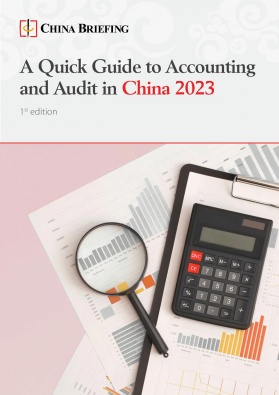China to Regulate Deep Synthesis (Deepfake) Technology Starting 2023
China has released a set of new measures governing deep synthesis (or “deepfake”) technology and services–text, images, audio, video, virtual scenes, or other information produced using generative models. These measures come into effect January 10, 2023. Below we outline the contents of the new regulation and explain the potential impact on businesses.
On November 25, 2022, the Cyberspace Administration of China (CAC), the Ministry of Industry and Information Technology (MIIT), and the Ministry of Public Security (MPS) jointly issued the Provisions on the Administration of Deep Synthesis of Internet-based Information Services (the Deep Synthesis Provisions).
With a total of 25 articles in five chapters, the document clarifies the rules on the management of deep synthesis data and technologies, urging deep synthesis service providers and technology supporters to ensure the respect of laws and regulations in several key areas.
The Deep Synthesis Provisions will become effective on January 10, 2023 as part of the Chinese government’s efforts to strengthen the supervision of deep synthesis technology and services.
What is “deep synthesis” technology?
Deep synthesis technology is commonly known as “deepfake”, a combination of “deep learning” and “fake”. Such technology uses powerful machine learning and artificial intelligence techniques to edit or synthesize visual and audio information that can thus produce “fake” content.
Specifically, this concept applies to synthetic media in which a person in an existing image or video is replaced according to someone else’s likeness. The main deep learning techniques for producing deepfakes involve training generative neural network topologies like autoencoders or generative adversarial networks (GANs).
Key aspects of the Deep Synthesis Provisions
What is the scope of China’s Deep Synthesis Provisions?
The CAC describes deep synthesis technology as that which employs deep learning, virtual reality, and other synthetic algorithms to produce text, images, audio, video, virtual scenes, and other network information. These include, but are not limited to:
- Techniques for creating or altering text
- Technologies for creating or altering voice content, such as text-to-speech and voice attribute conversion
- Techniques for creating or altering non-speech content, such as music
- Techniques for creating or altering biometric features in images and video content, such as face generation, face replacement, or gesture manipulation
- 3D reconstruction, digital simulation, and other technologies that create or alter 3D models
Which entities will be regulated under the Deep Synthesis Provisions?
Deep synthesis services providers and users are the two main entities regulated by the Deep Synthesis Provisions. Deep synthesis services refer to the application of such technology to provide internet information services. Accordingly:
- “Deep synthesis service providers” refers to companies that offer deep synthesis services as well as those who provide them with technical support.
- “Deep synthesis service users” refers to organizations and people who utilize deep synthesis services to create, duplicate, publish, or transfer information.
What are the main responsibilities of deep synthesis service providers?
The Deep Synthesis Provisions clearly stipulate the main responsibility of deep synthesis service providers. These cover several key areas, including (but not limited to):
- Data security and personal information protection: According to the Deep Synthesis Provisions, deep synthesis service providers must strengthen data management by taking necessary measures for personal data protection according to the existing Data Security Law, Personal Information Protection Law, etc. Service providers are required to establish and enhance management systems for staff training, algorithm review, user registration, data security, child protection, and the protection of personal information.
- Transparency: Deep synthesis service providers must establish guidelines, criteria, and processes for recognizing false or damaging information, and to deal with users who produce false or damaging material using deep synthesis technology. They must also form and disclose management rules and platform conventions, improve service agreements, and implement a real-identity information authentication system. Other tools for ensuring transparency include strengthening the management of in-depth synthetic content, adopting review mechanisms of synthetic data, creating and improving a feature database for identifying illegal and false information, and recording relevant network logs.
- Content management and labeling: The Deep Synthesis Provisions call for the creation of a mechanism for dispelling fake news so that when deep synthesis services are used to produce, copy, publish and disseminate false information, deep synthesis service providers are required to take measures to dispel such news, keep records, and report them to the relevant authorities (such as the Internet Information Department). In addition, the new measures make it mandatory to add labels or tags on information generated from using deep synthesis technologies. These include voice simulation, intelligent conversation or writing that simulate the style of a real person, face image synthesis, or face manipulation.
- Technical security: To improve users’ safety on a technical basis, deep synthesis service providers must periodically review algorithms and are obliged to conduct security assessments when providing models, templates, and other tools with the editing function of the face, voice, and other biometric information, or objects, scenes, and other non-biometric information that may involve national security, national image, national interests, and public interests.
What are the filing obligations for deep synthesis service providers?
The Deep Synthesis Provisions further establish that deep synthesis service providers with the attribute of public opinion or social mobilization ability should go through the filing procedures per the Provisions on the Management of Algorithmic Recommendations for Internet Information Services.
The deep synthesis service providers and technical supporters who have completed the filing shall indicate their filing numbers and provide links to publicity information in prominent positions on the websites and applications where they provide services to the outside world.
A timeline of China’s regulations on deep synthesis / deepfake technology
In a speech to the Politburo in October 2021, President Xi Jinping notably stressed that much of China’s current national policy also relies on the rapid expansion of its digital economy. President Xi argued that technology advancements will increase China’s competitiveness, but he also cautioned that “unhealthy and uncontrolled symptoms” in the country’s digital economy jeopardize the sector’s steady growth. The Deep Synthesis Provisions released by the CAC, along with a set of other relevant measures, is part of the vision laid out by the Chinese government, which calls for both advancement of technology and the establishment of measures to regulate the cyberspace in a way that is beneficial to the national interest.
The Deep Synthesis Provisions is built on the 2019 Regulations on the Administration of Online Audio and Video Information Services, which generally forbade the use of computer-generated pictures, audio, and video to produce or disseminate “rumors” (fake news). The new rules, however, are directed towards deep synthesis service providers and place a strong emphasis on data management, cybersecurity, and real-name user authentication, alerting viewers to synthetic material.
On January 28, 2022, the CAC released the first version of the Deep Synthesis Provisions, which was opened for public commentary until February 28, 2022. The draft ultimately evolved to the final version of the measures announced in late November.
Why does China’s Deep Synthesis Provisions matter?
The CAC declared that the Provisions have the double aim to both encourage the healthy growth of businesses and reduce any hazards associated with activities offered by platforms that utilize deep learning or virtual reality to modify any online material. The fact that China’s proposed restrictions cover produced text, picture augmentation, and virtual sceneries in addition to deepfakes shows that the country is considering the potential effects of developing technologies on the stability of its system more generally.
In terms of how far technology can progress, there is no doubt that the technology is revolutionary, but it has also raised concerns for governments around the world. In particular, the potential use of deepfakes in the production of fake news, hoaxes, bullying, and financial fraud has solicited considerable debate. Just prior to China’s announcement of the latest regulations, the European Parliament had ratified amendments to its Digital Services Act (DSA, due to take effect in 2023), with regard to the spread of deepfakes.
More importantly, if the new guidelines in China are successful, they may establish a framework for a policy that other countries might build upon and adopt. Globally, certain countries have also moved towards passing local privacy laws that may target deepfakes. The effectiveness of Chinese measures can thus provide a precise framework for other countries, specifically the public sector, to detect, flag, and regulate deepfakes.
About Us
China Briefing is written and produced by Dezan Shira & Associates. The practice assists foreign investors into China and has done so since 1992 through offices in Beijing, Tianjin, Dalian, Qingdao, Shanghai, Hangzhou, Ningbo, Suzhou, Guangzhou, Dongguan, Zhongshan, Shenzhen, and Hong Kong. Please contact the firm for assistance in China at china@dezshira.com.
Dezan Shira & Associates has offices in Vietnam, Indonesia, Singapore, United States, Germany, Italy, India, and Russia, in addition to our trade research facilities along the Belt & Road Initiative. We also have partner firms assisting foreign investors in The Philippines, Malaysia, Thailand, Bangladesh.
- Previous Article US Securities Body Gains Full Access to Audit Records for US-Listed Chinese Firms
- Next Article Managing Your China Manufacturing & Supply Chains During COVID Outbreaks








